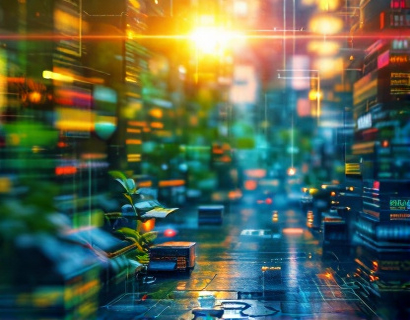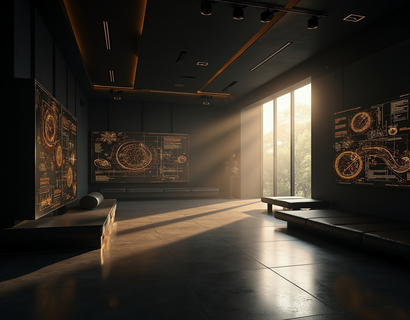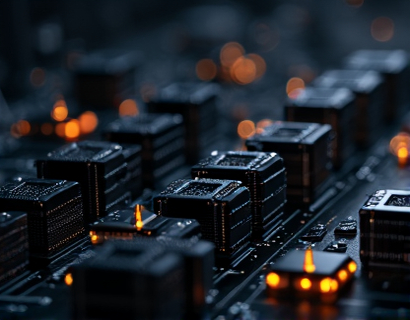Maximize Your Indoor Garden: Cutting-Edge Tech for Optimal Solarium Ecosystems
Indoor gardening has evolved significantly over the years, transforming from a simple hobby into a sophisticated practice that leverages advanced technology to create thriving ecosystems. With the right tools and techniques, you can maximize your indoor garden's potential, ensuring that your plants not only survive but thrive in a controlled environment. This article explores the cutting-edge technology available for solariums, focusing on how to optimize light, climate, and automation to create a sustainable and flourishing indoor garden.
The Importance of Technology in Indoor Gardening
As urban living spaces become smaller and more people seek to bring nature indoors, the demand for effective indoor gardening solutions has surged. Technology plays a crucial role in this transformation, allowing gardeners to replicate the ideal conditions for plant growth regardless of external weather conditions. By utilizing advanced systems for lighting, climate control, and automation, indoor gardeners can create a micro-ecosystem that meets the specific needs of their plants.
Optimizing Light for Plant Growth
Light is one of the most critical factors in plant growth. In a solarium, natural sunlight can be supplemented or replaced with artificial lighting systems designed to provide the optimal spectrum for photosynthesis. Here are some of the most effective lighting technologies available:
LED Grow Lights
LED grow lights have revolutionized indoor gardening. They are energy-efficient, long-lasting, and can be tailored to emit specific wavelengths of light that plants need for growth. Unlike traditional grow lights, LEDs produce less heat, reducing the risk of overheating your plants. Additionally, they can be programmed to simulate natural light cycles, promoting healthy growth patterns.
Full-Spectrum Lighting
Full-spectrum lights provide a balanced light spectrum that mimics natural sunlight. This type of lighting is essential for all stages of plant growth, from seedling to flowering. By using full-spectrum lights, indoor gardeners can ensure that their plants receive the necessary light for photosynthesis, leading to healthier and more robust growth.
Smart Lighting Systems
Smart lighting systems allow for greater control over your indoor garden's lighting conditions. These systems can be programmed to adjust the intensity and duration of light based on the specific needs of your plants. Some smart lights even come with sensors that monitor plant health and adjust lighting accordingly, ensuring optimal growth conditions at all times.
Climate Control for Optimal Growth
In addition to light, maintaining the right climate is essential for a successful indoor garden. Temperature, humidity, and air circulation all play significant roles in plant health. Here are some technologies that can help you achieve the perfect climate in your solarium:
Automated Climate Control Systems
Automated climate control systems can monitor and adjust temperature and humidity levels in real-time. These systems use sensors to detect changes in the environment and can automatically activate heating, cooling, or humidifying devices to maintain optimal conditions. This level of automation ensures that your plants are always in the best possible environment for growth.
Heating and Cooling Solutions
Depending on your location and the time of year, you may need to implement heating or cooling solutions to maintain a stable climate in your solarium. Radiant heating systems, for example, can provide consistent warmth without drying out the air, while evaporative coolers can help maintain humidity levels during hot months. Combining these systems with automated controls can create a comfortable environment for your plants year-round.
Humidity Control Devices
Humidity is a critical factor in plant health, especially for tropical species. Humidifiers and dehumidifiers can be used to maintain the ideal humidity levels in your solarium. Some advanced systems can monitor humidity levels and adjust automatically, ensuring that your plants receive the moisture they need without becoming waterlogged.
Automation for Convenience and Efficiency
Automation is a game-changer for indoor gardening, allowing you to manage your garden with minimal effort. Here are some automation technologies that can enhance your indoor gardening experience:
Smart Irrigation Systems
Smart irrigation systems can take the guesswork out of watering your plants. These systems use soil moisture sensors to determine when your plants need water and can automatically deliver the right amount of moisture. This not only saves time but also prevents overwatering, which can lead to root rot and other issues.
Automated Nutrient Delivery
Providing the right nutrients is essential for plant health. Automated nutrient delivery systems can mix and deliver the appropriate nutrients to your plants based on their specific needs. These systems can be programmed to adjust nutrient levels based on growth stages, ensuring that your plants receive the right balance of nutrients at all times.
Remote Monitoring and Control
With the advent of smart technology, many indoor gardeners can now monitor and control their gardens remotely. Mobile apps and web interfaces allow you to check on your plants, adjust lighting, and modify climate settings from anywhere. This level of control ensures that your indoor garden remains healthy, even when you're not physically present.
Creating a Sustainable Indoor Garden
Sustainability is a growing concern for many indoor gardeners. By incorporating eco-friendly practices and technologies, you can create a garden that is not only productive but also environmentally responsible. Here are some strategies to consider:
Energy-Efficient Technologies
Investing in energy-efficient technologies, such as LED lighting and smart climate control systems, can significantly reduce your indoor garden's energy consumption. These technologies not only save you money on utility bills but also minimize your carbon footprint.
Water Conservation Techniques
Water conservation is essential for sustainable gardening. Implementing rainwater harvesting systems or using greywater for irrigation can help reduce water waste. Additionally, smart irrigation systems can optimize water usage, ensuring that your plants receive the moisture they need without excess runoff.
Organic Growing Practices
Using organic growing practices can enhance the sustainability of your indoor garden. This includes using organic fertilizers, pest control methods, and soil amendments. By avoiding synthetic chemicals, you can create a healthier environment for your plants and contribute to a more sustainable ecosystem.
Tailoring Your Indoor Garden to Your Needs
Every indoor gardener has unique needs and preferences. By customizing your indoor garden setup, you can create an environment that is perfectly suited to your plants and lifestyle. Here are some considerations for tailoring your indoor garden:
Choosing the Right Plants
Not all plants thrive in the same conditions. When designing your indoor garden, consider the specific light, temperature, and humidity requirements of the plants you wish to grow. Researching plant varieties that are well-suited for indoor environments can help you create a successful garden.
Designing Your Space
The layout of your solarium can impact plant growth and accessibility. Consider factors such as light exposure, airflow, and ease of maintenance when designing your indoor garden. Vertical gardening systems, for example, can maximize space while providing ample light and air circulation for your plants.
Incorporating Aesthetics
Your indoor garden should be a reflection of your personal style. Incorporating decorative elements, such as planters, shelving, and lighting fixtures, can enhance the visual appeal of your garden. Additionally, consider how your garden fits into the overall design of your home, creating a harmonious and inviting space.
Future Trends in Indoor Gardening Technology
The field of indoor gardening technology is constantly evolving, with new innovations emerging regularly. Here are some trends to watch for in the future:
Vertical Farming
Vertical farming is gaining popularity as a way to maximize space and resources in urban environments. This method involves growing plants in stacked layers, often using hydroponic or aeroponic systems. As technology advances, vertical farming systems are becoming more efficient and accessible for home gardeners.
AI and Machine Learning
Artificial intelligence and machine learning are beginning to play a role in indoor gardening. These technologies can analyze data from sensors and make real-time adjustments to lighting, climate, and nutrient delivery, optimizing conditions for plant growth. As these technologies become more sophisticated, they will offer even greater support for indoor gardeners.
Biotechnology
Advancements in biotechnology may lead to the development of new plant varieties that are better suited for indoor environments. These plants may require less light, water, or nutrients, making them ideal for urban gardeners. Additionally, biotechnological innovations could enhance pest resistance and overall plant health.
Conclusion
Maximizing your indoor garden's potential requires a thoughtful approach that combines cutting-edge technology with a deep understanding of plant needs. By optimizing light, climate, and automation, you can create a thriving solarium ecosystem that supports sustainable growth. As technology continues to advance, the possibilities for indoor gardening will only expand, offering exciting opportunities for gardeners to explore. Embrace the future of indoor gardening and transform your space into a high-tech garden oasis where nature and technology converge for unparalleled growth and sustainability.










































